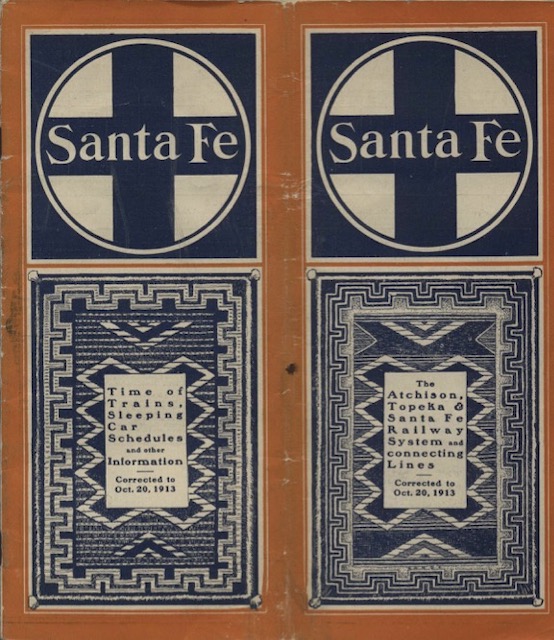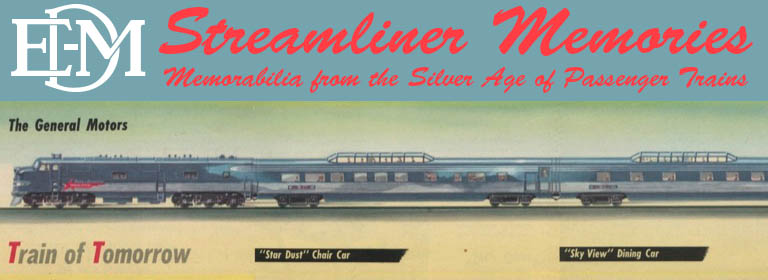In October 1913, after 13 years of work, the Atlantic and Pacific oceans were joined at the Panama Canal for the first time. Though the canal wouldn’t be open for business for another ten months, its pending completion was certain enough that San Francisco and San Diego had begun planning competing world fairs to celebrate its opening.
 Click image to download a 22.8-MB PDF of this 48-page timetable.
Click image to download a 22.8-MB PDF of this 48-page timetable.
Though they wouldn’t be held until 1915, both of those fairs–the Panama-Pacific Exposition in San Francisco and Panama-California Expo in San Diego–were advertised on page 2 of this 1913 timetable. To encourage people to think about traveling to the expos, the ad offers “fall and winter exclusion fares” of just $109.50 for the round trip from Chicago to either San Francisco or San Diego. That sounds reasonable, but it is more than $3,150 in today’s dollars.
A full eight pages of this timetable are devoted to maps. Most of the 17 pages before the maps are devoted to condensed timetables of the various routes. The full timetables begin only after the maps.
Unlike Southern Pacific, Rock Island, and a few other railroads, Santa Fe followed printer convention of putting the main cover (shown above) on the front. However, it broke from convention by numbering each half page separately, so while I count 48 pages the timetable has 96 page numbers. The back cover was used for an ad for the Grand Canyon and El Tovar Hotel, “under management of Fred Harvey” (but owned by Santa Fe).
The timetable indicates that Santa Fe offered four trains a day between Chicago and California. The all-Pullman California Limited was trains 3 & 4. Other westbound trains included #1, the Los Angeles Express, which operated part of the way with train #7, the San Francisco Express, plus #9 was the California Fast Mail. Eastbound train #2 was called the Tourist Flyer, #8 was the Eastern Express, and #10 was the Overland Express.
Trains 5 & 6 went between Denver and Chicago and were known as the Colorado Express westbound and Chicago Express eastbound. All of these trains except the California Limited had coaches and tourist sleepers as well as Pullmans.
Dining cars went all the way from Chicago to California only on the California Limited. Other trains might have a diner for one or two meals but otherwise stopped at Fred Harvey restaurants along the way. A list of all Fred Harvey dining rooms, lunch rooms, and hotels was on page 94 (PDF page 47).
